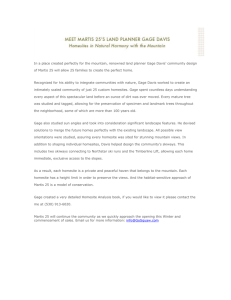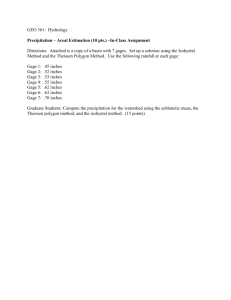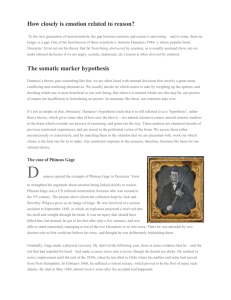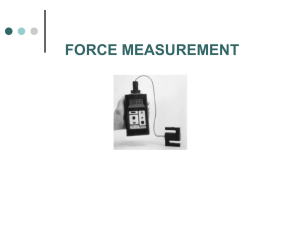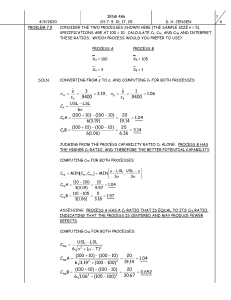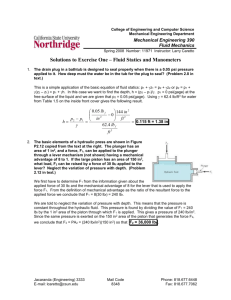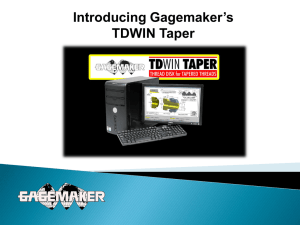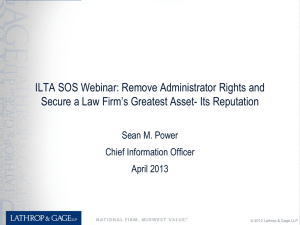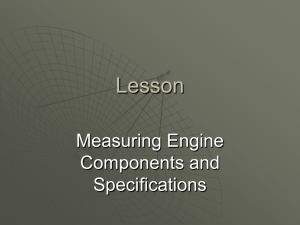Fluid Mechanics LAB: PRESSURE MEASUREMENT AND GAGE
advertisement
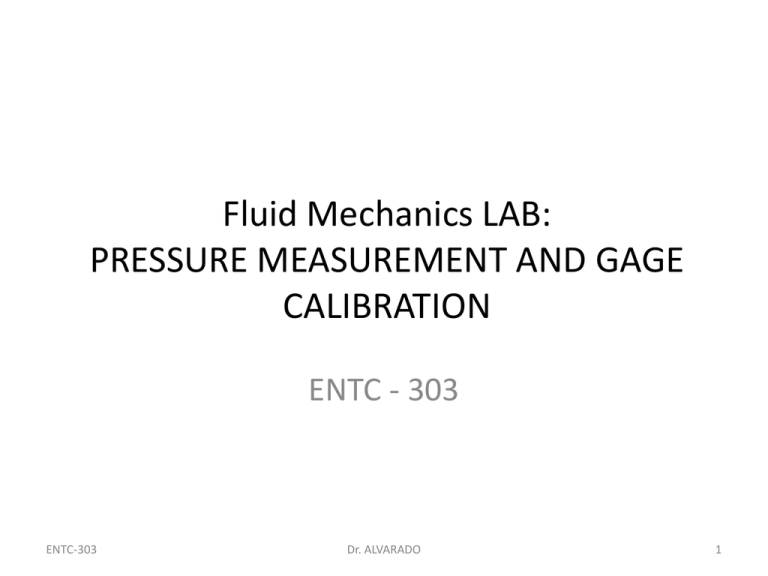
Fluid Mechanics LAB: PRESSURE MEASUREMENT AND GAGE CALIBRATION ENTC - 303 ENTC-303 Dr. ALVARADO 1 Objective • To learn about the different pressure measuring devices frequently used to measure pressure difference in fluid flow. • To calibrate a pressure gage. Pressure Measurement Pressure measurement is important for many reasons. It can provide information needed to determine a system’s flow rate. Pressure measuring devices can also allow operating pressures to be monitored, so that any necessary adjustments can be made. Since the pressure in any fluid is not constant from one point to the next, it is important to measure the pressure at different points in the system. Pressure Measuring Devices • Bourdon tube gages - can measure both pneumatic and hydraulic pressure. - cannot measure low pressure in the range of 0-5 psi • Diaphragm-type dial gages Pressure Measuring Devices • Manometer A manometer employs a column of liquid, which is forced upward to a height where it balances the pressure being measured. The pressure exerted by the liquid column depends on it height and the density of the liquid. - U-tube manometer The reading is taken as the difference in height of the two columns. - Well-type manometer The column height can be read directly. Pressure Gage Calibration • Calibration refers to the process of comparing the reading of an instrument or device that is used to measure a desired variable, with a primary reference standard. • The primary reference standard is a device, which measures the desired variable in basic units such as mass, length, time which is reproducible and accurate. Pressure Gage Calibration Steps: 1. Make sure that the pressure gauge tester is filled with oil and that it has no air bubbles inside. 2. Note down the mass of the platform and piston of the gage tester. Also record the area of the piston. 3. Record the gage reading without any additional weight. In order to ensure that the piston is not stuck inside due to friction, always make sure to spin the platform before noting the reading of the pressure gage. 4. Place weights in the following increments (0.5, 1.0. 2.0, 3.0, 4.0, 5.0 kg.), noting down the gage reading at each step. 5. Remove the weights one at a time, and note the readings on the gage at each step. This is done to check for gage hysteresis. 6. Perform a total of five trials. Pressure Gage Calibration Steps: 7. The apparent pressure is the average of all the gauge readings per weight increment. 8. Calculate the true pressure by dividing the sum of the weights on the platform and the weight of the platform with no load by the cross sectional area of the piston. Use the following equation: Pture (Weights + Plarform) å = Cross _ Sectional _ Area Data Analysis: Plot the following: – Actual pressure (gage readings) as a function of true pressure (from equation above). – Gage correction (True Pressure – Actual Pressure) as a function of true pressure. Mass Total added mass True to on pressure piston piston (kg) 0.0 0.5 1.0 2.0 3.0 4.0 5.0 (kg) (kPa) Increasing Pressure Gage Reading(kPa) Average (kPa) Gage Gage Correction error (kPa) (%) Mass Total added mass True to on pressure piston piston (kg) 5.0 4.0 3.0 2.0 1.0 0.5 0.0 (kg) (kPa) Decreasing Pressure Gage Reading(kPa) Gage Gage Average Correction error (kPa) (kPa) (%)

